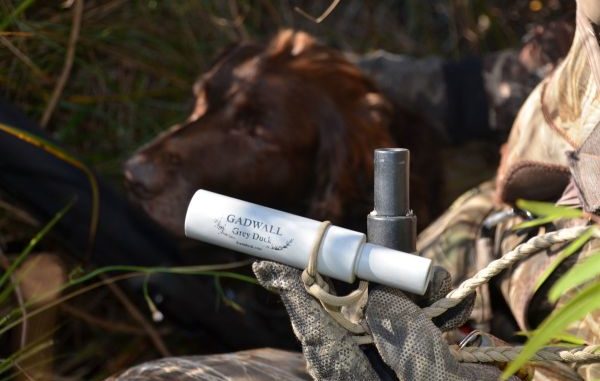
Louisiana marsh hunters harvest a wide variety of duck species, but the ducks that probably most closely defines marsh hunting is the gadwall, invariably called the gray duck.
Current populations are healthy, double the long term population numbers. Best of all, 75 percent of all the gadwalls in North America winter in coastal Louisiana and Texas.
With those numbers, it’s only natural that gray ducks get a lot of attention from duck hunters.
And attention translates into hunting pressure. Heavy hunting pressure in turn produces wary birds.
Gray ducks are notorious for being relatively easy to kill early in the season, but almost impossible to sucker into gun range late in the season, preferring to light in the center of a large pond after giving a hunter’s spread a scornful once-over and sneering at the same-old, same-old mallard calls they have heard so often.
Gray duck calls are hard to find, and ones that are easy to blow and effective are even rarer.
Most hunters resort to manipulating mallard calls to sound like gray ducks — usually unsuccessfully.
Ray Bellant and Cal Kingsmill blew wonderful gadwall calls I had never heard of before. They were made by an Oregon company named, of all things, KumDuck.
The story of the call is an interesting one.
Bellant grew up in Oregon. When he was 16 years old, he decided he needed a duck call and headed to a local Bi-Mart store, a glorified West Coast version of a dollar store.
As Bellant tells it, the man who waited on him counseled that “you can buy one of those expensive calls, but this one will last a lifetime.”
Bellant paid $8 for the call and soon found out that in those days just about everyone in Washington, Oregon and northern California blew a KumDuck mallard call.
A few years later, Bellant joined the Navy and was stationed all over the United States.
He hunted everywhere he went, and he blew that call until 2005 when he was stationed in New Orleans and Hurricane Katrina flooded his home.
He found the call buried in the mud of his garage. Its body was OK, but the reeds were shot.
So he looked up KumDuck on the Internet and called to order reeds. He found out that the company had just been purchased by a then 60-year-old named Jim May.
Bellant got his reeds and a lot more — a long-term friendship.
May was busy reinventing the company, which produced only the mallard call when he bought it. Something of an expert on reeds, he replaced the call’s polycarbonate reeds with Mylar reeds of his own patented design.
Then he expanded KumDuck’s lineup to 14 different single- and double-reed duck and goose calls.
One of them, the gadwall call, was instigated by Bellant, who by now had become such close friends with May that they would talk by phone several times a week. Bellant also would travel from Slidell to Rickreall, Ore., to hunt with him.
“Ray really pushed me to make the call,” May said. “When he came up, he blew his modified mallard calls for me. I also listened a lot to recorded calls made by wild gadwalls.”
May had very little field experience with the bird, which is quite rare in the Pacific Flyway.
The result was a single-reed call set in a body built of a blend of ABS and polystyrene plastics. The call is easy to tune to mimic both the guttural quack of a hen or the grunt of a drake by simply sliding the reed in or out on the tone board.
May attributes some of his success with calls to music, which he called “the love of my life.
KumDuck calls can be ordered from the company’s website, but Jim is happy to talk ducks and duck calling with anyone from anywhere in the country. He can be reached at 503-559-8905.
